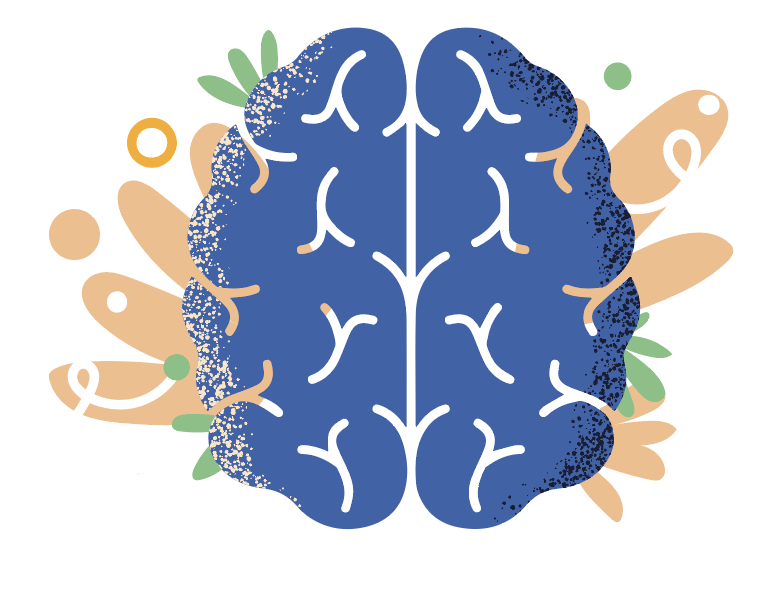Organizational cultures can flourish by harnessing the brain’s most powerful neural networks.
Many of the central elements and key concepts involved in running a business – from business plans, strategy and execution to revenue, growth and market capitalization – exercise our brains in a particular way. They require a capacity for number-crunching, demand we keep an eye on time, measure progress against benchmarks, and focus on the actions that lead to defined goals.
But meeting these requirements only leverages a specific subset of neural networks: those that make up the ‘executive functions’, or planning circuits, of the brain. That is not where your complexity lives. These brain regions cannot search for the finer details of subtle calculations that allow you to ‘see around corners’ or imagine the future with greater accuracy; nor can they source from the deeper, abstract parts of your thinking capacity. As a result, solutions to complex problems made only with these brain regions often fall flat.
But what if we could tap into other parts of the brain – the circuits that process our thoughts, emotions, and deepest puzzle-solving abilities? These parts of the brain add complexity and subtlety to our thinking. Unleashing the power of complex interactions among these different functions – in oneself and in others – is the core task for humanized leadership.
Humanized leadership has been defined as the ability to lead by integrating the awareness that you, and others, are regarded as full-blown individuals, with valued mental states that exist in a social context. This stands in contrast to dehumanized leadership, which has been described as “the reduction of leadership to a set of skills and its elevation to a personal virtue” (Petriglieri and Petriglieri, ‘Can Business Schools Humanize Leadership?’, Academy of Management Learning & Education, 2015).
Such a reduction strips leadership of the complexity and socially-embedded sense of self that it requires in the sort of ambiguous and ever-changing business environments we so often find ourselves operating in today.
How do you build the capacity for humanized leadership in your organization?
The capacity for humanized leadership is an abstract, complex, and integrated wellspring – but there are building blocks that can get you there.
To build this complex human capacity to lead, I have created a framework that I utilize when I work with leaders in organizations. I call it the four Ps, standing for Personalize, Purpose, Passion and Psychological safety.
Personalize
Finding your “I”
To lead within an organization, you must connect with your deepest self; to facilitate the growth of others, you must help them do the same as well.
This is not as abstract as it may first sound. In the brain, the default mode network (DMN) is sometimes called the brain’s centre of gravity. It is vital in how we represent who we are, both to ourselves and to others. If we lean too far from it, we might tip over. While you can deliberately show people who you are, the DMN silently allows subtle but vital parts of your personality and intelligence to shine through. And it largely turns on when you are unfocused.
How to facilitate finding your “I” Leadership development programmes that protect time for a more reflective culture help to activate the DMN. When you encourage people to be their fullest selves and to operate from their centre of gravity, they will feel more stable, better able to execute on their tasks and more capable of being creative.
The DMN is also turned on by the simple act of doodling and by a technique called positive constructive daydreaming, where people take time off to do something low-key and enjoyable – like walking, gardening, knitting, and even lying on the beach or running through the woods with one’s dog – thereby allowing the mind to wander.
Purpose
Finding your why
Some people think of purpose as being a goal, but a sense of purpose differs from a goal. Purpose is what drives leaders, and when they connect with purpose, their productivity and creativity are boosted. One study found that personal purpose and goals, when aligned to a company vision, appear to impact motivation and engagement. When people feel aligned with a greater purpose, according to one study, “there is a deep, almost spiritual, commitment to making the world a better place and helping the organization contribute to that.” (Berg, J L, ‘The Role of Personal Purpose and Personal Goals in Symbiotic Visions’, Frontiers in Psychology, 2015).
That is not to say that personal ambitions are surrendered in the pursuit of organizational goals. In fact, the same study found that where there is a sense of alignment between organizational and personal goals, there is “a great sense of commitment to completing the steps or tasks necessary to move toward the vision” – yet, at the same time, “there is a clear delineation between work and life ambitions”. In fact, a sense of purpose has even been found to be a predictor of greater income and net worth.
A sense of purpose in life protects the brain and adds cognitive reserve – capabilities that enhance mental resilience. When things go wrong, that same sense of purpose also promotes better recovery; research shows that it diminishes conflicts in our minds, allowing actions to be carried out more smoothly.
How to build a sense of purpose
To connect to this intrinsic drive, I use a framework that boosts intrinsic motivation, called self-determination theory. It relies on three core elements:
- Competence – am I doing what I am best at?
- Autonomy – do I have enough freedom to think and act as I see fit?
- Social relations – do the people around me support my work?
Allowing leaders to probe these questions can help them make adjustments to their work in a way that augments purpose.
Another approach is to set aside time for a purpose discovery. This is a process that involves several steps, including defining our values and passions; reflecting on our current and desired competencies and habits, our present and future social life, and our possible future career; describing the ideal future; and committing to specific goals and plans that will make that future a reality. While this approach mixes purpose and goals, it relies heavily on a discovery of the gap between one’s current and desired life – a discussion that is driven by a focus on values.
Companies that are successful over the long term are strongly oriented to values, so seeking alignment on your values is essential – for instance when hiring. While there is no fixed list of values, some to consider are autonomy, health, wealth, playfulness, independence, social connection, and honesty.
Passion
Igniting your emotional intensity
Passion is the experience of strongly identifying with an activity, feeling motivated to engage in it, and experiencing very positive feelings when doing it. It is human for passion to wax and wane – and vital, therefore, to adjust the context and content of a job to keep one’s passion alive.
For example, it is almost impossible to connect with one’s passion if everyone else around us works like a drone. It is also impossible to feel truly passionate about anything when work is overwhelming and when it breaks the harmony within one’s own life. Harmonious passion is helpful; obsessive passion is not.
When people feel passionately, their brain’s motivational centres and reward centres are turned on. Trying to complete tasks in a dreary and passionless way will likely lead to burnout.
How to build a sense of passion
To truly feel passionate about one’s work, it is important to feel connected to the work, motivated to do it, and to feel good about it. This involves more than a general sense of interest; the relationship with one’s work needs to be moving and emotionally compelling. Job crafting can add subtle elements to our work that increase its resonance. For example, a software developer who feels isolated could increase the social element of their job by arranging monthly meetings with colleagues.
A recent study showed that passion is most likely to be elevated with a ‘develop’ mindset: the belief that you can develop your passion as you continue to engage with your work. Having the attitude that your work has to be the perfect fit from the get-go does not help. When you believe that you can develop your passion, you are more likely to cultivate strategies to pursue it. Examples of these cultivation strategies include thinking about how the subject relates to your personal goals, or to improving society; building experience in, and familiarity with, the subject; or seeking out inspirational mentors and peers. These same principles can be used when instilling passion in others. To support a team member’s development, you might consider: does the job connect to their personal goals? Do they understand how their job is helping society? Do they have time to actively learn more about their job? Do they have contact with inspiring mentors and peers?
Psychological safety
Shaping an environment for free thinking
The term ‘psychological safety’ was coined by Amy Edmondson to describe “a shared belief held by members of a team that the team is safe for interpersonal risk taking”. While it may sound simple to take a risk, our society is so polarized that it often feels unsafe to say what one actually feels. Humanity is highly diverse, and we advocate for diversity in the workplace – yet a diversity of opinions or values often creates conflicts within organizations. This can lead some people to say silent, robbing them of their humanity. I have worked with leaders at various levels within hierarchical organizations who did not feel safe advocating for a culture change they believed necessary; they had resigned themselves to the status quo. They, their team members, and the organization suffered as a result. Organizations where people are better able to voice their beliefs can adapt to challenges more nimbly and, as a result, win greater market share.
How to build psychological safety
One key principle for building psychological safety is to focus on the work at hand, rather than being distracted by interpersonal differences. Leadership development programmes should focus on both individuals and teams, addressing their diversity and the different kinds of competencies required. Normalizing vulnerability – like mild anxiety or feelings of overwhelm – also helps. And in certain instances, it helps to visualize circumstances where one can appreciate another’s perspectives, speak candidly, make complex decisions, and resolve situations amicably. Starting with the end-vision in mind may help.
Humanized leadership is a competency that all leaders should take time to probe in depth. When they do, it can elevate their personal game and take teams to the next level of execution. When every individual in a team can be themselves fully, work with a strong sense of purpose and passion, and feel psychologically safe, we unleash the full and complex power of being alive.








